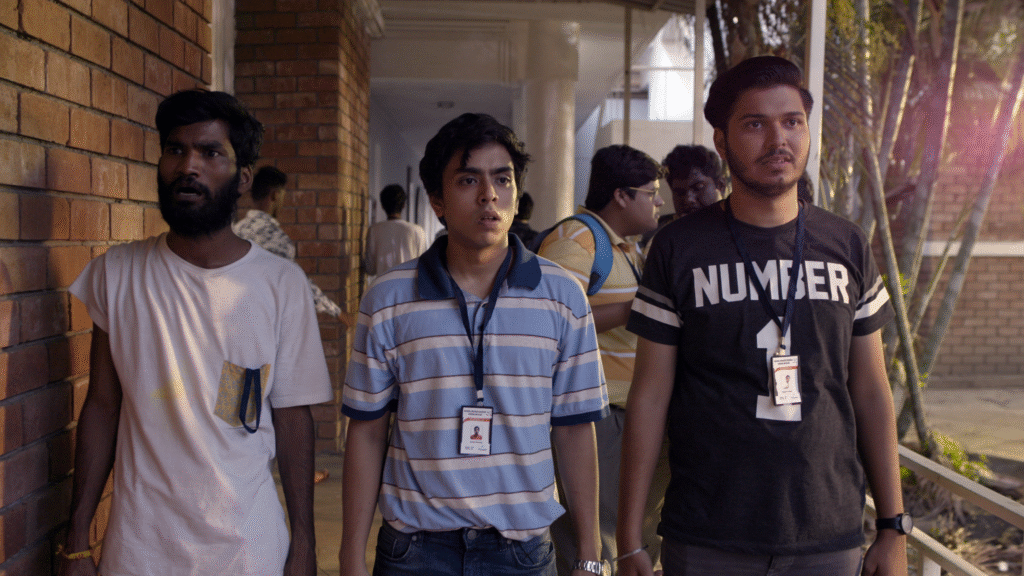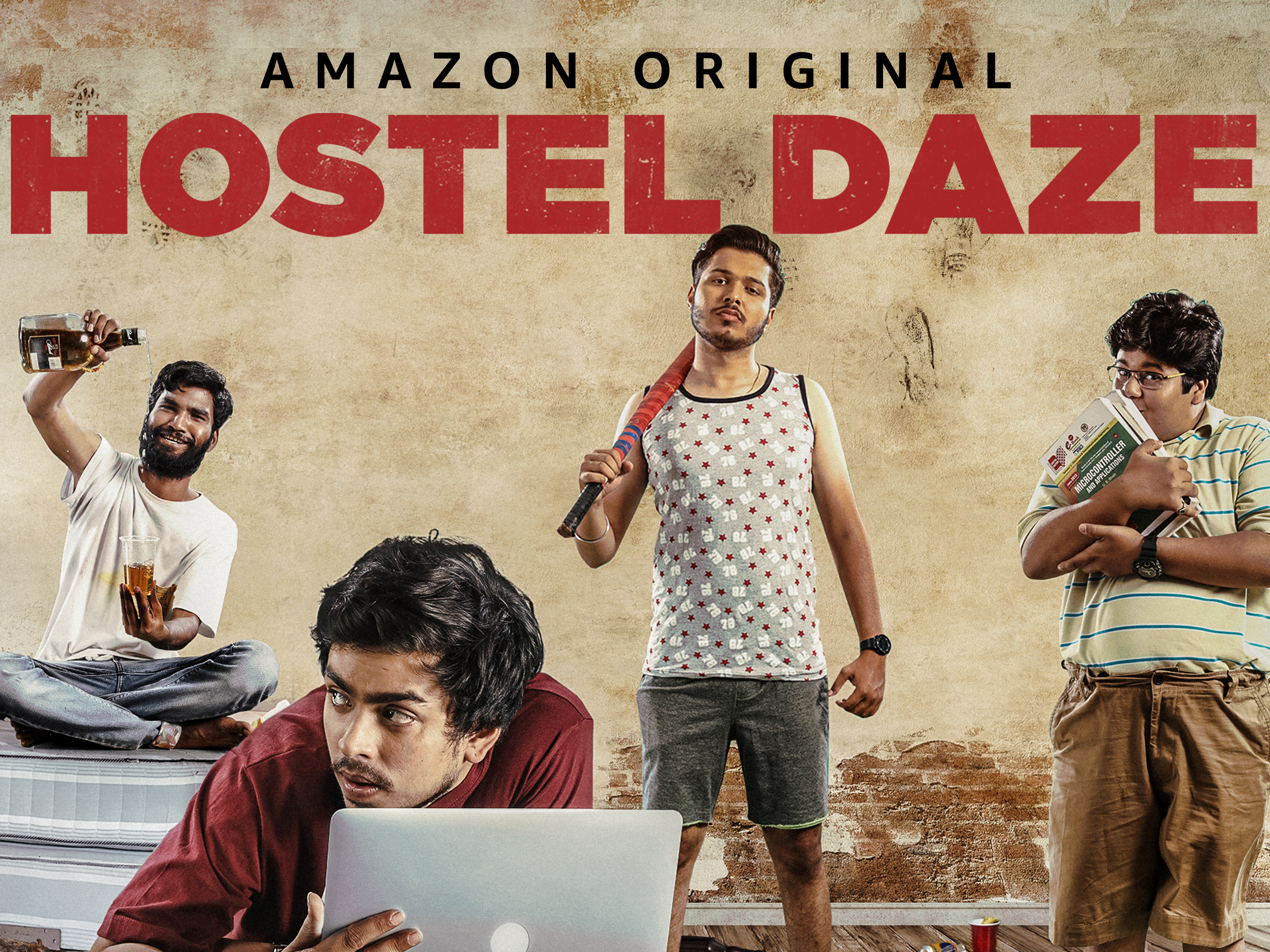About “Hostel Daze”


Hostel Daze an Amazon Prime Show, created by TVF
Hostel Daze drops us into the unpredictable, high‑voltage world of an engineering college hostel in its first semester. The series follows Ankit, Chirag, Jaat, and Jhantoo as they navigate ragging, rivalries, crushes, exam stress, and the subtle politics of identity at NATTI (their fictional institution)
The tone is unapologetically nostalgic—TVF retells this engineering-celluloid folklore with affectionate satire, using observational humor to soften real pressures with reminiscence.
Critics praised the show’s characters and authenticity. The Film Companion called it “sharp, observant and immensely entertaining,” noting its youth-driven energy and anecdotal realism. IMDb reviewers repeatedly noted how “real” it felt and a “must‑watch for all engineers,” for its accuracy in portraying hostel life: hazing, GPL (birthday bumps), last‑minute cramming, and computer‑lab hijinks.
Costume Design Intent: Realism Meets Personality
Designing costumes for these characters meant embedding their personalities in their clothes—every thread had to feel lived-in, believable, yet telling.
Character-led Styling
Jhantoo (Jatin acted by Nikhil Vijay): The unofficial hostel boss—lived-in tees, scruffy jeans. Jhantoo is creative and is seen wearing only white, aged t-shirts with print details. He emerges from years in the hostel, so his look had to feel ingrained: informal, slightly disheveled, practically utilitarian.
Jaat (Rupesh Bhati, acted by Shubham Gaur): Loud Haryanvi braggadocio. His wardrobe was confident: track-pants, sporty tees, bold logos reflecting his athletic past from Gurgaon, Haryana. His clothes capture his dominant sporty energy in greys and blacks.
Chirag (Chirag Bansal acted by Luv Vispute): Neat‑freak nerd. Crisp polo collared tucked‑in tees, clean sneakers. A human teddy bear—with a color palette dominated by yellow. From soft powder yellow to pastel yellow, striped and solid t-shirts, along with khaki shorts and clean white sneakers, lend contrast to his roommates.
Ankit (Ankit Pandey, acted by Adarsh Gourav): Clearly from a humble background, ordinary on the surface, but hungry for identity—budget tees, plain denims, sometimes mismatched layers. The transformation through the season had to happen via small costume shifts: worn t-shirts, evolving fits and accessories, marked his journey from an invisible freshman to someone with agency. Ankit was primarily seen in light and mid blues.
The characters’ clothing choices formed a visual shorthand: each personality was established through a signature color-dominated palette (white, grey, yellow, blue) and silhouettes—just as in the previous design for Shanky, where color-blocking and pockets told the story.
Reflecting the Hostel Culture
Costume design also had to reflect the environment of the hostel: communal laundry and bathrooms, hand-me-downs and borrowing t-shirts, and a palette which could accommodate late-night study sessions under fluorescent lights.
Wear-and-wash fabrics: Tees faded at the collar, stitching that looked snagged, particularly for Jhantoo and Ankit.
Subtle personalization: A pocket with a folded memo, pen stains, a bartered t-shirt from seniors—like Shanky’s “Rafoo” detail, small but meaningful.
Silhouettes grounded in utility and reality: Oversized shirts, loose jeans, simple sneakers—not fashionable, but functional. Typical light, quick-drying checked towels, which are a staple in middle-class Indian households.
- Simplistic messaging: Impactful T-shirts with slogans and messages were used to establish some secondary characters quickly and to add humor to situations. For eg, Lolly’s character wears a red t-shirt emblazoned with a slogan “Mother f**cking Starboy,” which is visible while he walks into the corridor lined with hostel mates waiting to thrash him with flip-flops – a birthday “celebration” ritual.
- Simple but big details: In boys’ hostels, boys got creative with what was available to them. This is visible in the design of the costumes for ragging scenes.
Hostel Daze earned praise for its authenticity and likable characters. Certain reviewers also noted the nostalgia filter at play—a gentler lens chosen by adult creators looking back. The styling also leaned into that same warmth—executed with realism, yet softened by familiarity: retro tees, worn denim, and carefully faded fabrics to evoke memory, not exaggeration.



